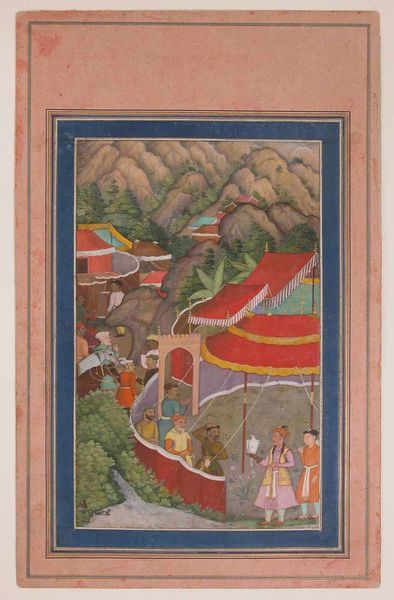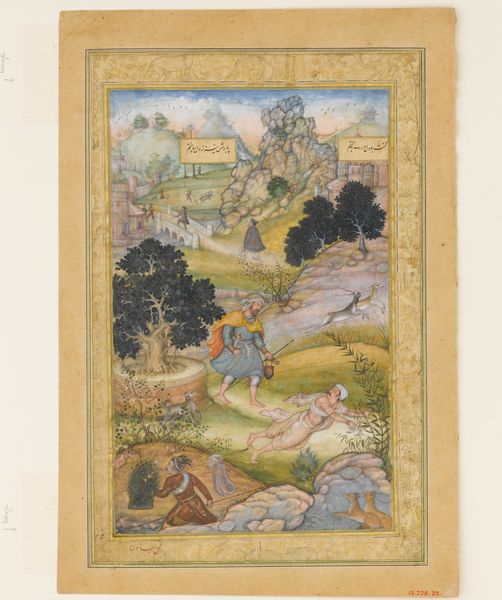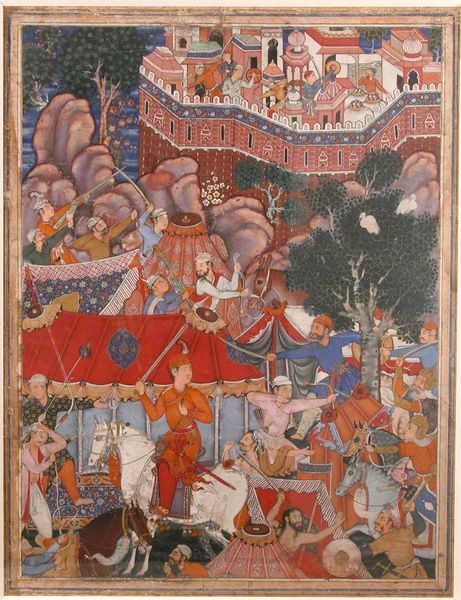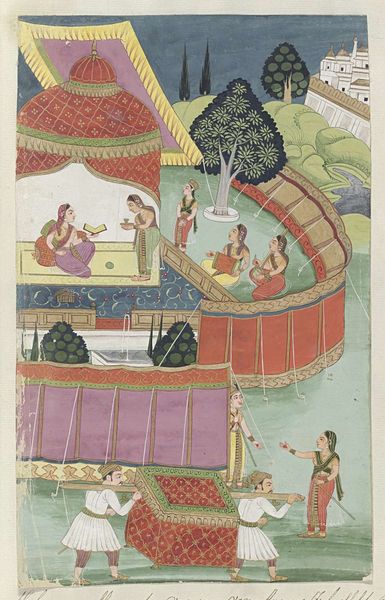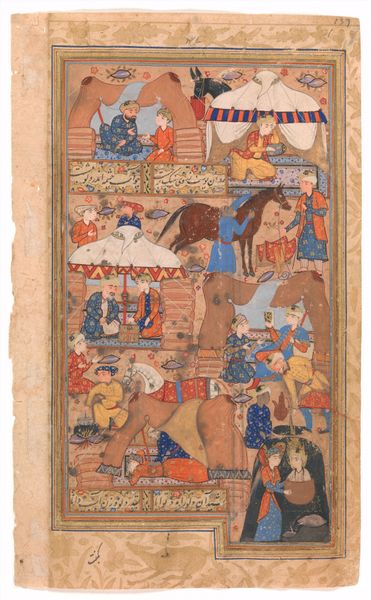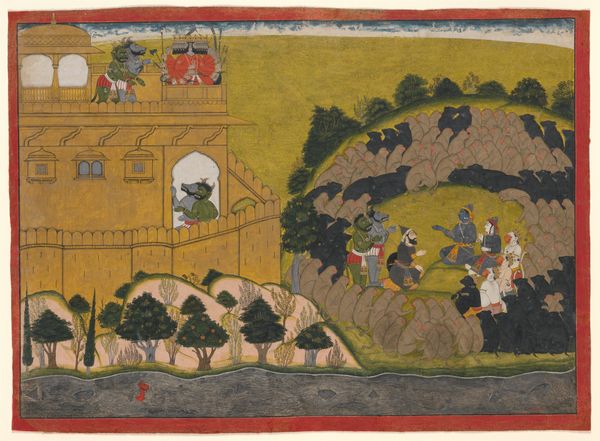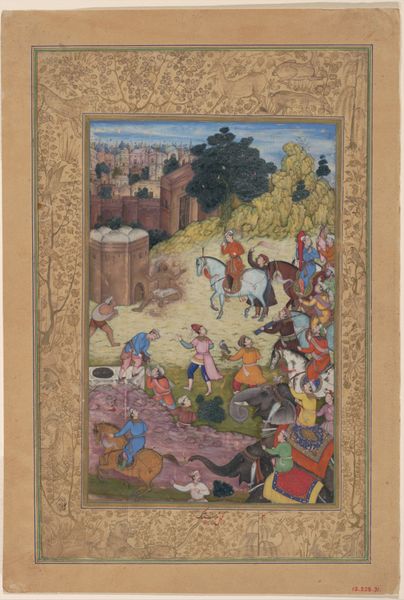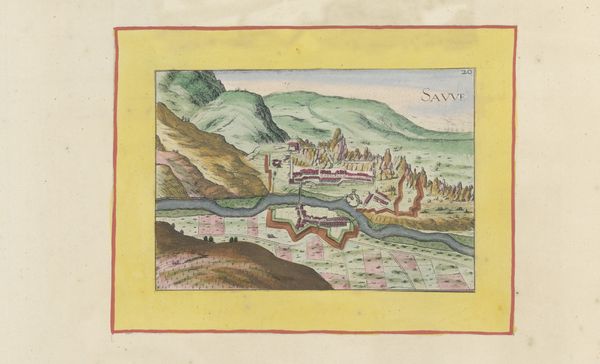
"Alexander Fights a Sea Battle", Folio from a Khamsa (Quintet) of Amir Khusrau Dihlavi 1575 - 1625
0:00
0:00
painting, watercolor
#
toned paper
#
painting
#
landscape
#
watercolor
#
horse
#
men
#
islamic-art
#
miniature
Dimensions: H. 9 3/4 in. (24.8 cm) W. 6 1/4 in. (15.9 cm)
Copyright: Public Domain
Editor: This is "Alexander Fights a Sea Battle," a miniature painting made between 1575 and 1625. It’s watercolor on toned paper and is currently held at the Metropolitan Museum of Art. I'm immediately struck by how dynamic the composition is, so full of movement. What visual elements stand out to you? Curator: The painting compels immediate attention through its structured organization of the page. Observe the clear stratification; the foreground's dynamic battle scene gives way to a middle ground punctuated by architectural elements, then culminating in the serene hills of the background. Notice also how color is cleverly used to delineate space: cool tones for the water and sky contrast sharply with the warm hues of the figures and structures. What do you make of the formal relationship between figure and ground? Editor: I see what you mean about the colour! It gives it depth. It almost looks like a stage, where the main action is very deliberately put forward. What's your sense of the artist's skill? Curator: The artist’s technical facility is beyond reproach. The execution demonstrates impressive control over the medium. Look closely at the details: each figure, however small, is rendered with considerable precision, suggesting a clear understanding of human form. What are your observations on how the artist managed light and shadow in defining these forms? Editor: It's definitely subtle, like a soft glow. So, focusing on the formal elements, one could say the artist created a hierarchical space with vivid colour contrasts and impressive detailing to capture this epic scene, almost staging it for us to see Alexander's might? Curator: Precisely. The composition isn't just representational; it’s also a self-referential exercise in spatial arrangement and pictorial rhetoric, subtly alluding to power through design itself. A reminder that what it contains reflects choices about what the artist is expressing. Editor: Thank you, this close look makes me understand the intentional choices better. Seeing art this way is very illuminating.
Comments
No comments
Be the first to comment and join the conversation on the ultimate creative platform.




